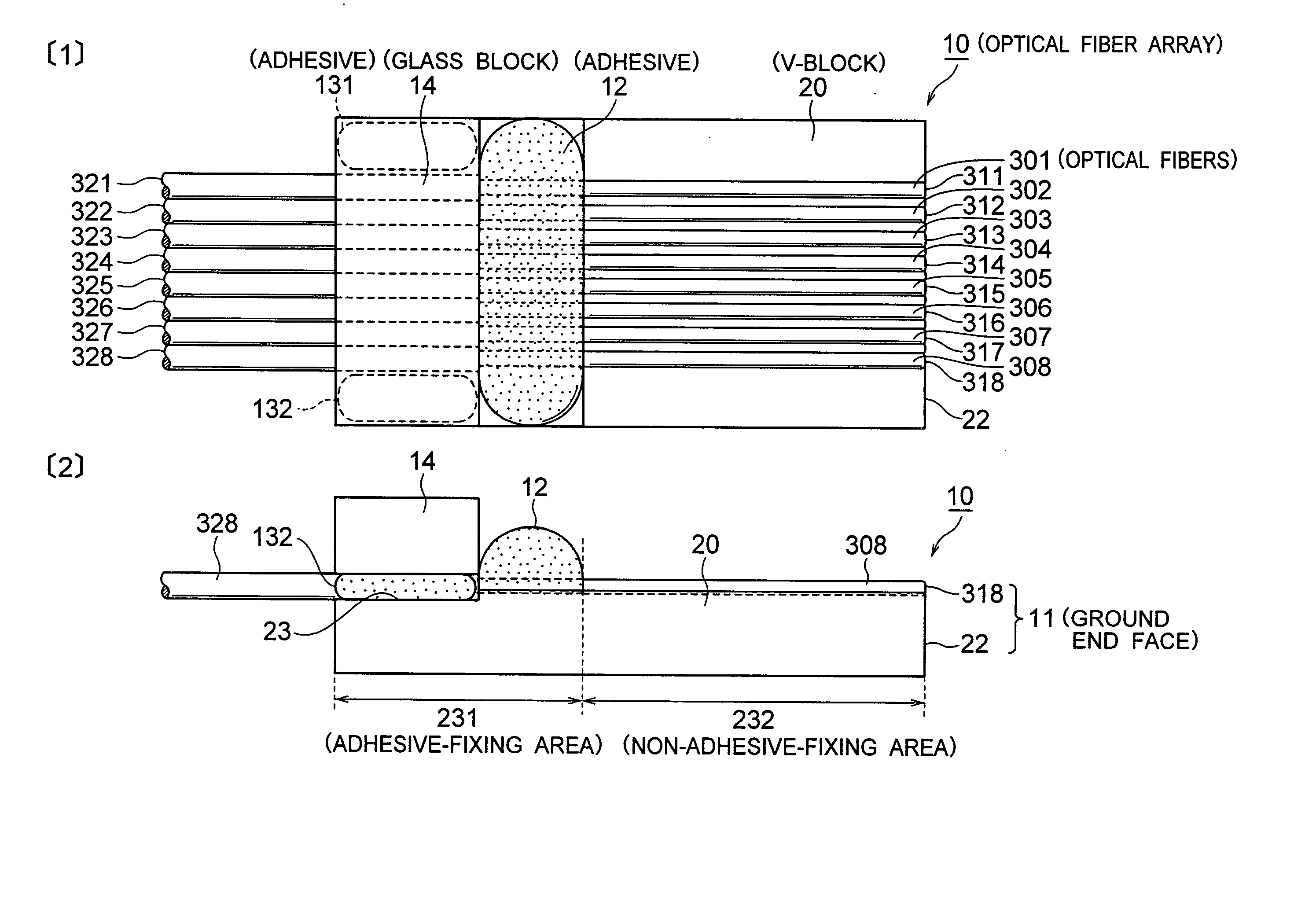Optical fiber component, optical waveguide module, and manufacturing method
a manufacturing method and optical fiber technology, applied in the field of optical fiber components, can solve problems such as decreasing alignment precision, and achieve the effects of simplifying the manufacturing process, increasing alignment precision and optical fiber strength, and increasing optical fiber alignment precision
- Summary
- Abstract
- Description
- Claims
- Application Information
AI Technical Summary
Benefits of technology
Problems solved by technology
Method used
Image
Examples
first embodiment
[0053]FIG. 4 and FIG. 5 show an optical fiber array according to the present invention. FIG. 4 [1] is a top view, FIG. 4[2] is a front view, and FIG. 5 is a right side view. Although an optical fiber array is used as an optical fiber component in the embodiments of the present invention given below, the optical fiber component is not limited to an optical fiber array.
[0054] An optical fiber array 10 in this embodiment comprises a V-block 20 in which a plurality of V-grooves 211-218 are formed and optical fibers 301-308 that are fit individually into the V-grooves 211-218. The optical fibers 301-308 are fit in the V-grooves 211-218 with their end faces 311-318 flush approximately with an end face 22 of the V-block 20. The end face 22 of the V-block 20, including the end faces 311-318 of the optical fibers 301-308, is shaped according to the end face of an object to which the optical fibers 301-308 are to be connected. A ground end face 11, composed of the end faces 311-318 of the opt...
second embodiment
[0084]FIG. 14 is a diagram showing a front view of an optical waveguide module according to the present invention and its manufacturing method. The process proceeds in order of FIG. 14 [1] to FIG. 14 [3]. The following describes this embodiment with reference to those drawings. Note that the same reference numerals as those in FIG. 11 denote the same structural elements and their descriptions are omitted.
[0085] As shown in FIG. 14 [3], the configuration of an optical waveguide module 60 in this embodiment is similar to that of the optical waveguide module 40 in the first embodiment except that an abutment block 61 is added. This abutment block 61 is provided on the PLC substrate 50 and has an abutment face 62 that is flush with the end faces 531-538 of the optical waveguides 511-518. The abutment block 61, made of a glass substrate or a silicon substrate, is fixed on the PLC substrate 50 with an adhesive, for example, and the abutment face 62 is formed at the same time the slit 57 i...
PUM
 Login to View More
Login to View More Abstract
Description
Claims
Application Information
 Login to View More
Login to View More - R&D
- Intellectual Property
- Life Sciences
- Materials
- Tech Scout
- Unparalleled Data Quality
- Higher Quality Content
- 60% Fewer Hallucinations
Browse by: Latest US Patents, China's latest patents, Technical Efficacy Thesaurus, Application Domain, Technology Topic, Popular Technical Reports.
© 2025 PatSnap. All rights reserved.Legal|Privacy policy|Modern Slavery Act Transparency Statement|Sitemap|About US| Contact US: help@patsnap.com



